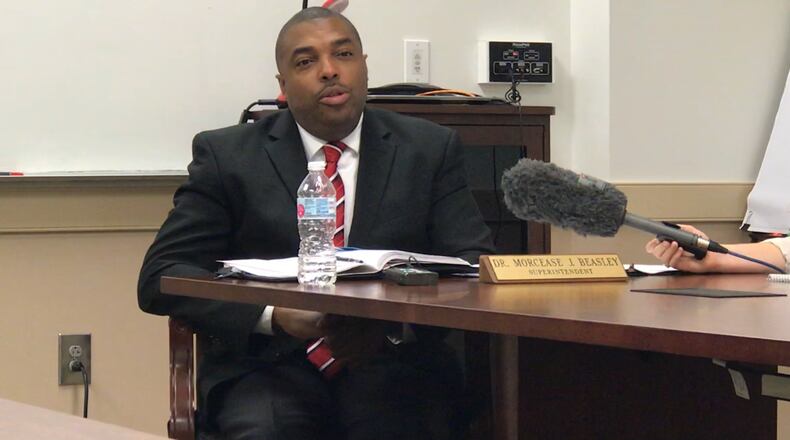Morcease Beasley paused amid comments on Clayton County Public Schools’ mission, put his hands together and took a more direct turn.
“We’ve got to give every child what they need,” said Beasley, beginning his second year as the metro Atlanta school district’s superintendent.
VIDEO: More on back to school
Beasley was holding court with journalists from across the region who cover Clayton County in some form. He said the purpose of the meeting was to share information and establish a culture of transparency with those working to tell the district's story.
He shared lessons from his first year, as well as achievements and weaknesses his staff already is addressing. Yes, he said, the school district once known for being the only in the country for the last 50 years to lose its accreditation has achieved a graduation rate of 69.6, with a rate of 60 percent or more at all its schools.
“There are a lot of kids with a lot of gaps,” he said. “Yes, we have challenges. But we’re working to make sure we have a quality teacher in the front of every classroom.
“What we’re doing is creating a culture.”
The district is turning toward early learning, which has been shown to help boost student achievement. Beasley said the district currently serves one-fourth of the counties 4- and 5-year-olds, but will be increasing the number of pre-K classrooms. The district also is planning additional dual-immersion programs, beginning both a French and a Chinese program in 2019, and encouraging more students to take advantage of dual-enrollment. The district saw a 700-plus student increase in its number of dually enrolled students last year.
“We don’t want our students to feel like they have to go anywhere else to be competitive,” Beasley said.
Conversations already have begun to address the school district’s mobility rate, where students transfer schools in the middle of the school year. Clayton has the highest mobility rate in the state, at 30.1 percent. Studies show transient students are more likely to fall behind on lessons during the school year, affecting their grades and proficiency.
About the Author
Keep Reading
The Latest
Featured



